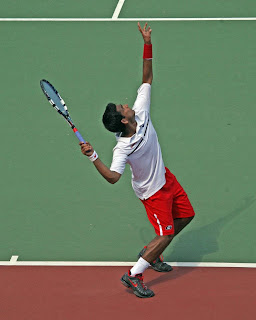BEATING BERNARD TOMIC: STEP BY STEP
In his lead-up to the 2013 Australian Open, Bernard Tomic has won every match he has played, including a win over Novak Djokovic during their encounter at the Hopman Cup. Many are now picking Tomic to blaze a trail of destruction in the Australian Open, some even saying he could beat Roger Federer if they meet, as expected, in the 3rd round. While his early form has been good leading up to the Australian Open, all players have strengths and weaknesses. If his good form continues, many of his opponents will look closer at his likes and dislikes and eventually devise a strategic plan to beat him. Here is my strategy on How To Beat Bernard Tomic, Step By Step. Don’t let the flashy winners fool you, Tomic is essentially a counter-puncher. Counter-punchers need someone to attack them and preferably with pace on the ball. Tomic has been counter-attacking opponents that have played themselves out of position. He will strike if the ball has the required pace and the gap has o




